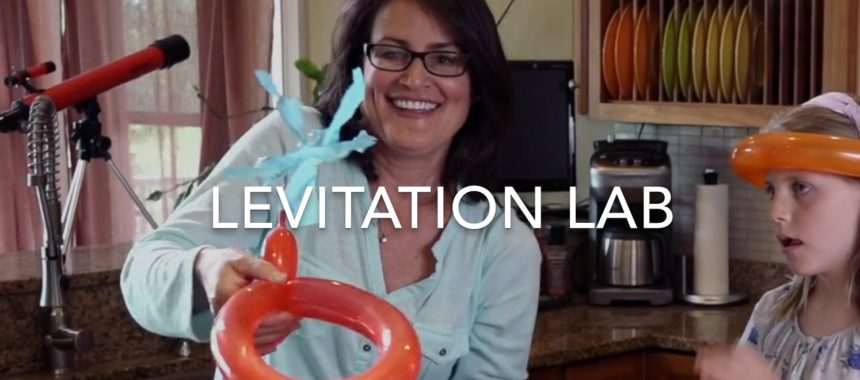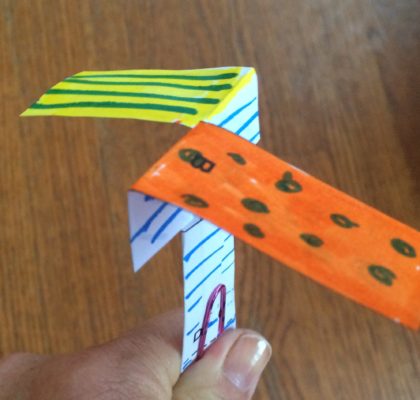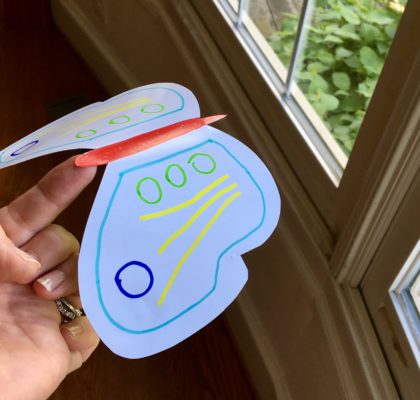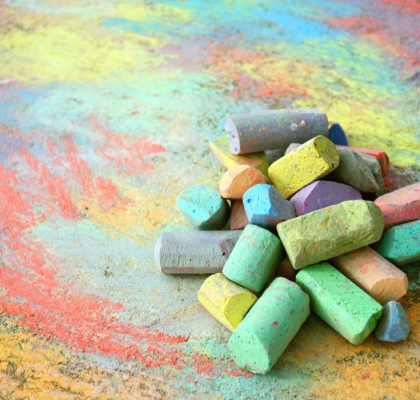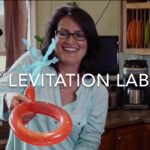 Add to Favorites
Add to Favorites
Make Objects Levitate with Static Electricity
In this hands-on science experiment, kids explore static electricity while making objects levitate with a balloon.
Simple explanation: Sometimes things attract or repel other things. Examples are magnets, or balloons that have been rubbed on a wool sweater to create static electricity.
Detailed explanation: This is a great activity for introducing kids to the concepts of atomic structure and electrical charges.
An atom is the smallest unit of matter (that we currently know about . . . ). Atoms are made up of protons, neutrons and electrons. Protons and neutrons are in the nucleus (or center) of the atom while electrons move around outside of the nucleus. Protons have a positive charge, neutrons have a neutral charge, and electrons have a negative charge. For the sake of this discussion, we're going to focus only on protons and electrons. Think of them as opposites: protons are positive, electrons are negative.
Different atoms have different numbers of protons and electrons. When an atom has more protons, it has a positive charge. When an atom has more electrons, it has a negative charge. Atoms with either a positive or negative charge are called ions. Things with opposite charges (positive and negative) attract each other; things with same charges (positive to positive, negative to negative) repel each other. Think about magnetic materials, for example.
Atoms don't always stay the same, however. Electrons make things interesting because they can jump around from atom to atom. And when they move, they change the balance of things -- creating a positive or negative charge where there was none before.
This is what is happening when you create static electricity. When you rub a balloon against a wool sweater, you are making electrons move and creating ions.
Most balloons, by themselves, do not have a charge, and so will not attract or repel anything. (Try this.) The balloon is said to be neutral. But when you rub a balloon against a sweater, some of the electrons jump from the balloon atoms to the sweater atoms. This causes some of the atoms in the balloon to have a negative charge – so now the balloon will attract things with a positive charge (and repel things with a negative charge).
A scientist who studies things like electrical charges and electricity is sometimes called an electrical engineer. Electrical engineers not only study electricity, which is the flow of charge, but also try to figure out ways that people can use electricity. They design better electronics, such as cell phones, digital cameras, and computers. They also work on robots, the lighting and electricity in buildings, radar and navigation, and cars. They have even designed an ionic propulsion system for powering space travel!
Materials
- Balloon -- twisty balloon preferred - 1 of this item per student
- Piece of plastic shopping bag or tinsel - 1 of this item per student
- Wool blanket, sweater, or similar - 1 of this item per class
- Crepe paper or small bits of paper
Instructions
See video.


